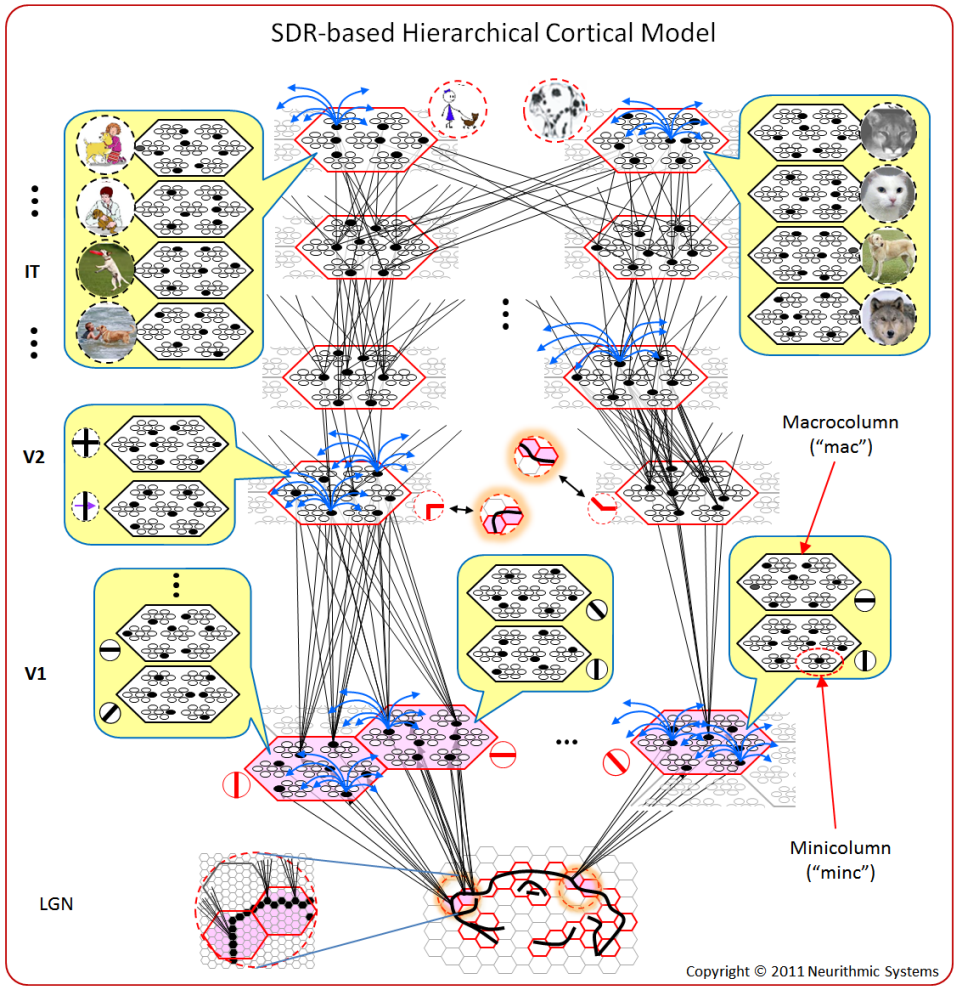The figure below shows what an SDR-based (SDC-based) model of the cortical visual hierarchy would look like. Also see figure for side-by-side comparison of the localist, e.g., HMAX, and SDR versions of the cortical visual hierarchy. Also see the NICE Workshop talk and poster and CNS 2013 summary.

- All cortical regions are sheets of (possibly overlapping) macs. Though in studies to date, they are non-overlapping.
- All macs use SDRs, a.k.a., sparse distributed codes (SDCs).
- A yellow callout shows other codes that are also stored in the mac, which are not fully active, but are partially active in proportion to their intersections with the current fully active code (in the red hexagon).
- Minicolumns (“mincs”) function as WTA modules, thus enforcing that any given mac’s codes are of size K, where K = number of mincs in the mac.
- The extreme search efficiency afforded by SDR, i.e., fixed time best-match retrieval, simultaneously occurs in all macs across all cortex active at any given moment.
- At any moment, probably thousands of macs across cortex will be actively coding features, or concepts, or events, across a wide range of spatiotemporal scales.
- At the center of the above figure, the glowing icons show the actual input features (at the LGN level) which span multiple V1-scale apertures, which are being coded at the V2 level. The double-headed arrows emphasize that these precise LGN-level features are mapped into more abstract SDRs, e.g., representing an upper-left right-angle corner, or a lower-left obtuse corner.
- To show why we are calling these SDRs “abstract”, we’d show other inputs wherein the patterns falling within these particular V2-scale LGN apertures, though novel, would be sufficiently similar to those shown here to elicit the exact same V2 codes shown here, thus demonstrating invariance, a.k.a., categorical responding.
- The blue arrow sprays suggest the horizontal (H) signals arising from active codes. In fact, all units comprising an active code send out H signals, which recur back to the same and neighboring macs. Active units also send out bottom-up (U) signals (black) and top-down (D) signals (not shown here).
